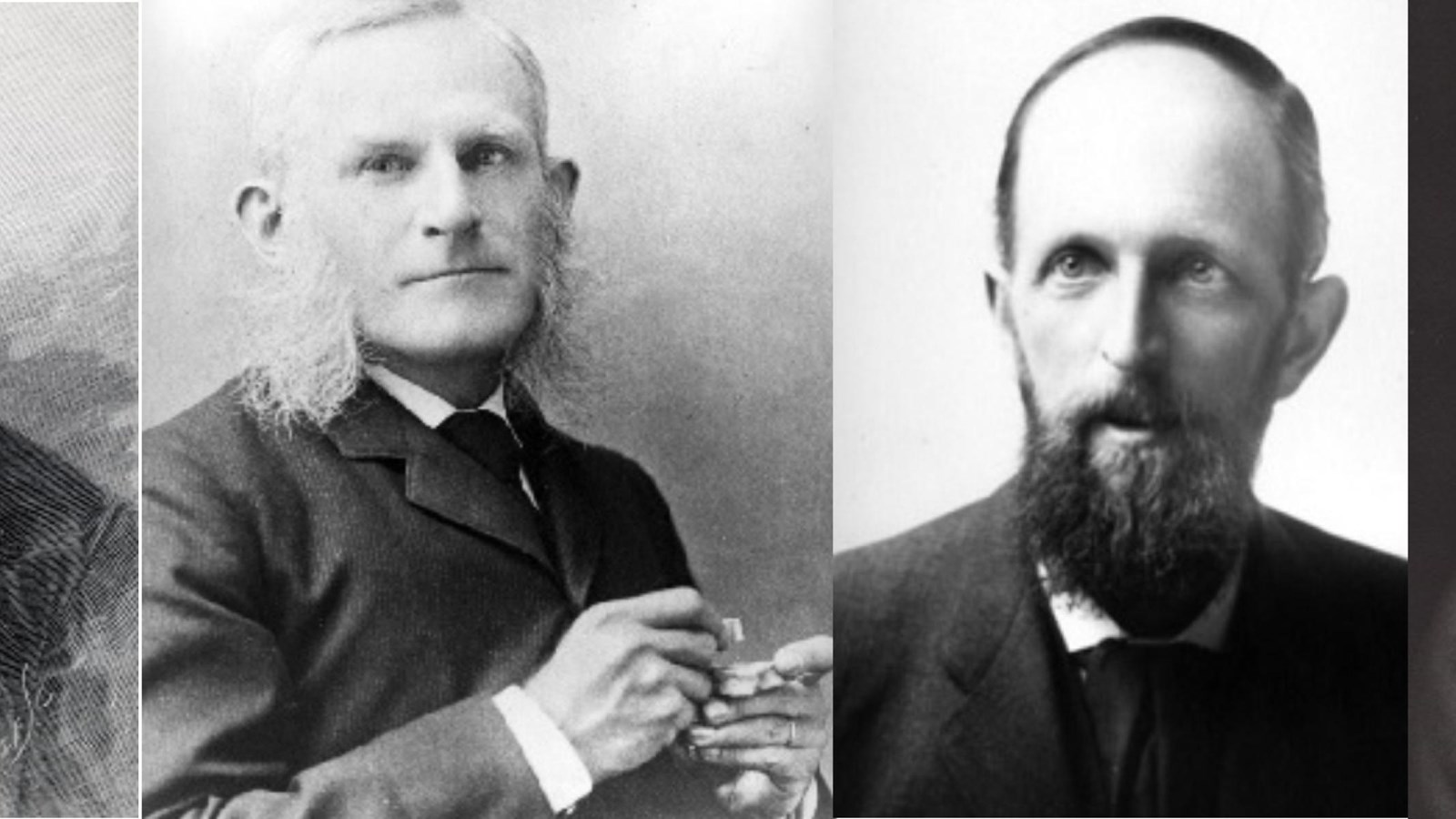Last updated: September 3, 2022
Place
The Big Five

Smithsonian, Harvard, UC Boulder, University of Iowa, University of California
Geoheritage Highlight!
Florissant was one of the first fossil sites to become well known during early scientific exploration of the American West. Many scientists contributed to this legacy, and our heritage of scientific knowledge about this valley and its fossils began with their discoveries.
Early Research
Scientific research of Florissant's fossils began in the 1870s when the earliest scientists arrived as part of the government-sponsored Hayden Survey of the Rocky Mountains. The Hayden Survey helped launch many of its scientists into brilliant careers. Since then, more than 150 scientists have followed in their footsteps in studying Florissant's fossils. About 20 museums and universities in the United States and United Kingdom contain the Florissant specimens described in scientific literature.
Leo Lesquereux
(1806-1889)
Lesquereux was the first to publish scientific information on Florissant's paleontology in 1873. He described the fossil plants from the Hayden Survey. Much of his collection is at the National Museum of Natural History and the Yale Peabody Museum.
Samuel Scudder
(1837-1911)
A paleontologist that worked with the U.S. Geological Survey, Scudder was one of the first scientists in the area. He worked with the Hayden Survey to describe about 600 new species of fossil insects from Florissant, and published The Tertiary Insects of North America in 1890. His large collections are today housed in Harvard Univserity's Museum of Comparative Zoology.
Theodore D.A. Cockerell
(1866-1948)
Professor Cockerell came from the University of Colorado. From 1906-1908, he organized expeditions to Florissant and collected some of the most impressive fossils ever to come from this area. Cockerell was very generous with his exchange of specimens. His huge collections, mostly at the University of Colorado Museum of Natural History, can also be found in other museums throughout the United States and United Kingdom.
Henry F. Wickham
(1866-1933)
H.F. Wickham was an entomologist who studied beetles at the University of Iowa. In 1912, he dug a trench six feet deep and twenty feet long in the Florissant shale beds to make new collections, and described 356 species of fossil beetles. Today, his collections are at the National Museum of Natural History.
Harry D. MacGinitie
(1896-1987)
Harry MacGinitie made extensive excavations at Florissant in 1936 and 1937. He completed the monograph Fossil Plants of the Florissant Beds, Colorado in 1953. MacGinitie's excavations used a horse and plow to remove layers of soil and rock. His collections can be found today at the University of Californa Museum of Paleontology.
The Hayden Survey
The Ferdinand V. Hayden Survey was one of the government's "Four Great Surveys of the West" and initiated scientific exploration and mapping between 1867 and 1878. Some of the great paleontologists of the time—Leo Lesquereux, Samuel Scudder, and Edward D. Cope—were contributers to the Hayden Survey and described many of the first fossils. Because of their discoveries here, Florissant quickly rose to world fame early in the history of the United States.
